"CHAOS"
manuel barber
11 Septiembre - 11 Octubre 2014
Calle Almadén 13, Madrid
 |  |  |  |  | 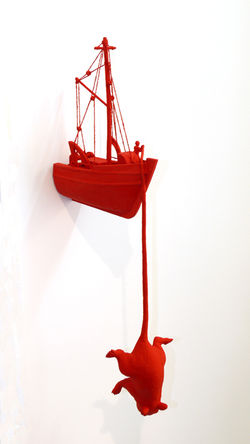 |  |
|---|---|---|---|---|---|---|
 | 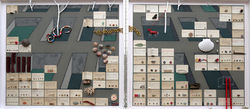 |  | 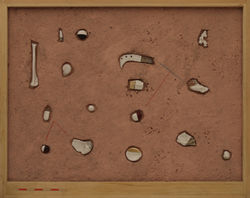 |  | 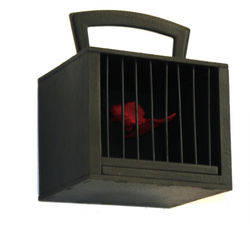 | 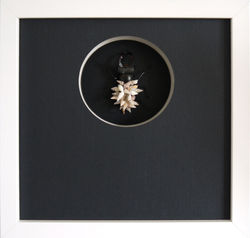 |
 | 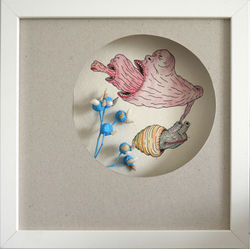 |  | 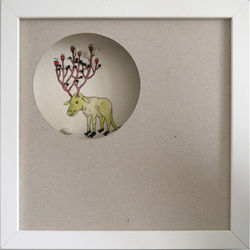 |
Se pueden determinar tres momentos en la vida de Manuel Barbero -especialmente- en los que se_cc781905-5cde -3194-bb3b-136bad5cf58d_ has questioned the blurred borders between the orderly and the chaotic. As a result of those three moments, the certainty arose in him that, in reality, said border was not such, and that what in his eyes seemed disordered and overflowing with chaos, in the eyes of another person could be full of order and far from the chaotic. He soon realized that the matter was not simply a matter of opinion: this seems orderly, this seems messy. It went further. Chaos and order passed through their own existence and, even delving a little deeper, the existence itself could be interpreted as a ball that bounces from the chaotic to the ordered to bounce again in reverse direction over and over again.
We will review now such moments.
The first of them arrived back in the 80s of the 20th century in the form of a television series with a suggestive name and captivating music: Cosmos. In the chapter titled The life of the stars, Carl Sagan invited us to reflect on the minutiae. For this, two or three touches of physics and chemistry were enough. One of them said that the entire universe is made up of a limited number of elements, quite limited for its vastness. On earth, for example, the number of chemically different atoms is only 92, which correspond to the 92 natural chemical elements and, specifically, 6 of them, only 6, make up 99% of the human being. In the same episode it was also explained that 99.9% of the universe was made up of hydrogen and helium. Everything we see, all the beauty and all the horror in the universe is made up of a handful of elements.
When he finished watching the Barbero program, he observed -from the balcony- the apparent stellar chaos in the sky and the apparent street chaos of the city, and thought: all this is hydrogen and helium, can there be a greater order universal than to reduce everything to two elements? Knowing that everything is practically made up of the same thing not only neutralizes the chaotic and orders it, it also makes us feel responsible for that chaos/order_cc781905-5cde-3194- bb3b-136bad5cf58d_to the extent that our own ingredients are the ingredients of all this.
The second appeared with Karinthy.
One of the theories that has most helped to order us as social beings is the famous six degrees of separation from the Hungarian Frigyes Karinthy: anyone on earth can be connected to any other person on the planet through a chain of acquaintances that has no more than five intermediaries. Only six degrees, six small steps that link us to the most deplorable murderer or the greatest of geniuses. Six reticular lines that draw a large virtual network on the surface of the population. Suddenly, the distances and the chaos with which one understands the social are ordered by means of six strokes. But the construction of the universe from few elements not only leaves the theory of the six degrees short, but reduces it to zero: the material with which the most deplorable murderer or the greatest of geniuses is made is my same material, Is there not room for greater order and therefore greater chaos?
The third arrived from his father's hand.
It was summer and part of his family spent a few days off in a town in Ávila. My father -accounts the artist-_cc781905-5cde-3194-bb3b-138d_secf5cf He had stayed at the family home ordering some texts that he wanted to publish. By chance of fate I had to return home without prior notice, when I opened the front door I found chaos at my feet, and not only at my feet. The whole house was papered: the floor, the furniture, the chairs, the stair rails, the steps, the beds, the kitchen, even the bathrooms. There was not a single hole without papers, you couldn't even step on it. Before me a clear mirror of the universe, the whole house full of papers as if it were galaxies, spread out in all corners without order or meaning. Without order or meaning for anyone but my father who knew perfectly well which tile in which room was page 36 or on which side of the sink was page 89 of chapter 5. All that chaotic universe of papers, deep down, was perfectly ordered.
Lo que Sagan o Karinthy le habían aportado a nivel teórico su padre se lo había servido en bandeja de prácticas. I would never forget that magisterial lesson on order and chaos and on the importance of not making value judgments from ignorance.






















